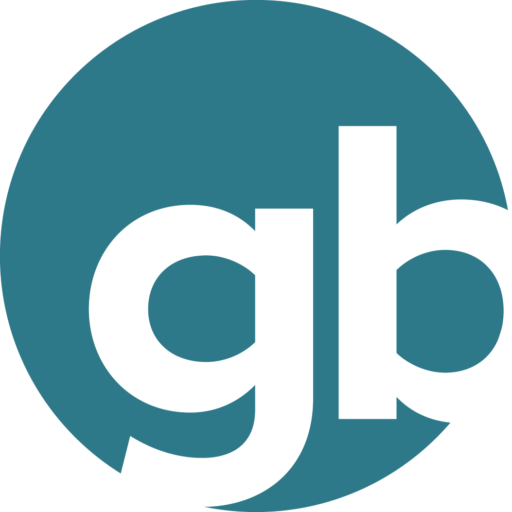The turmoil of the past few years has left many companies with rock-bottom valuations, according to a report on mergers and acquisitions on the market.
Research from Business XL magazine, in association with accountancy firm Crowe Clark Whitehill and corporate lawyers McGuireWoods, reveals that there are still 600 companies on AIM worth less than £20 million, of which 411 are worth less than £10 million and 247 less than £5 million.
In terms of valuation metrics, 13 per cent of companies with a positive price/earnings ratio are valued at less than five times earnings, while 38 per cent are valued at a multiple of below ten. Some 40 per cent of AIM, almost 500 companies, are valued at less than their annual turnover.
‘If you’re a static company that is not growing rapidly or going backwards, then being on AIM with a £10 million or £15 million market valuation doesn’t make a huge amount of sense,’ says Richard Beresford, a partner at McGuireWoods. ‘If it’s under £10 million, you’re paying out a huge amount of money for very little gain and you’re very unlikely to be able to raise funds.’
The bias of AIM has shifted unmistakably towards its larger constituents. At the beginning of last year, companies valued at less than £20 million made up 60 per cent of AIM by number. This year, that figure is 50 per cent. Microcaps, those worth less than £5 million, comprised 28 per cent of AIM in 2010 and account for 21 per cent today.
Robin Stevens, a partner at Crowe Clark Whitehill, says this is consistent with the much publicised statements by many chairmen and CEOs of delisting companies that ‘the ongoing costs, the lack of liquidity and little or no investor interest makes AIM very unattractive for very small companies with little growth potential’.
Given this inhospitable climate, it’s not surprising that 161 companies delisted during 2010, though this was less than the 274 that left the market the previous year. Of the 2010 delistings, about a third (58) left because they were acquired or merged with another company, while 32 departed after a ‘cost and benefits review’.
While delisting companies generate a certain amount of deal activity, there are also plenty of deals being done by AIM-quoted companies which are either growing through acquisition, or disposing of unwanted subsidiaries.
There were 217 such deals completed during 2010, worth a combined total of £1.29 billion. Of these, 168 were acquisitions, worth £937 million, and 42 were disposals, worth £352 million.
See also: Should I float on AIM? – If you are committed to faster growth, you should seriously consider a float on AIM.
The deals ranged in size from nominal sums, often £1, to the £222 million disposal of web hosting business Host Europe by Oakley Capital Investments.
There were 23 deals done with a total value of £10 million and above, among them the purchase for £60 million of Geronimo Inns by pub group Young’s. The consideration was paid in cash, funded entirely from a prearranged bank facility of £150 million.
CEO Stephen Goodyear says that the acquisition ‘achieved a pretty important step change’ in the size of Young’s managed house estate, which is now up 20 per cent to 148 pubs, with the total estate numbering 247. The deal also made sense strategically. ‘Geronimo is slightly differentiated in that it’s a little bit more female-friendly, but demographically, it is as similar [to Young’s] as you’ll ever get,’ adds Goodyear.
With a market capitalisation in excess of £150 million, Young’s is one of those companies that has really benefitted from its listing on AIM. ‘We were unusual in that we came off the Main Market,’ says Goodyear. ‘It’s certainly given us enormous flexibility, and for our shareholders there’s the benefit of tax breaks.’
However, finance director Peter Whitehead says using shares as part of the purchase consideration was not even considered in the case of Geronimo, since sufficient debt was available. ‘We had plenty of debt capacity. If we wanted to do a similar acquisition in future, we would probably need to put in a bit of equity as well.’
Not everyone has the luxury of a choice between cash and shares, since the cash is not always available. For all the acquisitions analysed in Business XL’s research, £257 million of the combined maximum consideration for all 168 deals was agreed to be paid in shares, some 28 per cent of the total.
Beresford of McGuireWoods feels that this is an encouraging sign, because it indicates many vendors have the confidence to accept shares in AIM companies as payment. But he suggests it can be problematic in cases where a board feels the company’s shares are undervalued, and simply don’t want to give equity away.
Mike Askew, CEO of CBG Group, used just cash for the small acquisition of another insurance intermediary, Rockbridge Healthcare. ‘The price of our shares has come way off the all-time high of £1.90 and now it’s at around 25p,’ he says. ‘If we used our stock to make acquisitions, we’d be giving too much away. The other problem is that we’re not buying from public companies or corporates, we’re buying what are essentially lifestyle businesses. They don’t want shares, they want money.’
Beresford echoes the point. ‘From a vendor’s point of view, if you want an exit, getting shares in a small AIM company is not going to achieve what you want.’
Nevertheless, for some companies, share payments are a way of aligning the interests of vendors with those of the acquirer. Andy Hutchinson, a director at design agency Fuse8, says the company’s all-share acquisition of Delete enabled vendors Jeremy Middleton and Graham Burns to gain equity in the acquirer, giving the two experienced men an added incentive to promote its interests as non-executive directors. Hutchinson adds that Fuse8 could have raised the cash, but chose to use shares to give Middleton and Burns ‘a seat at the table’.
For those looking at AIM for potential acquisition targets, valuations are undemanding, with a median price/earnings ratio of 12.5. But Stevens at Crowe Clark Whitehill notes that such multiples ‘reflect the price of a share, not the company’. If buyers want to take control, they usually have to up their offer, he adds.
That view is confirmed by examples of recent acquisitions of AIM companies. Vehicle tracking systems company Cybit was sold for a premium of 108.3 per cent to its share price on the day before the announcement of an offer for the company, or 131.9 per cent to the average share price for the previous 12 months, while marine systems specialist Hallin was acquired for 87.1 per cent above its share price on the last day before the offer.
However, the multiples of historic EBITDA in these cases are more reflective of a subdued M&A market. They were 4.2 for Cybit and 4.1 for Hallin.
One aspect of Business XL’s research that is likely to be of particular interest to acquirers is its analysis of cash levels in smaller, profitable AIM companies, those valued at under £20 million.
In the technology supersector, such companies have cash of £39.7 million; in support services, £28.3 million; in media, £30 million; in health, £8.4 million; and in general financial, £97.8 million. Average cash holdings range from £910,000 per company in support services to £3.9 million in general financial, showing a level of balance sheet health that belies the perception of AIM-quoted companies as high risk.
For Mebs Dossa, a partner at McGuireWoods, it’s time for acquisitive CEOs to look seriously at AIM. ‘If the acquirer is interested in certain parts of an AIM company, but the company isn’t prepared to sell, you have the option to acquire the whole target [in a hostile takeover], take the interesting parts that you want, and dispose of the rest.’
Beresford observes that cutting out the cost of maintaining a listing can dramatically improve the profitability of an acquired business. ‘If the company is making £500,000 or so [in profits], you can take it private and save £300,000 to £400,000 a year on CEO and board salaries and compliance costs. So you can get a 50 to 100 per cent increase in earnings just by taking away the AIM listing. It’s incredibly attractive.’






